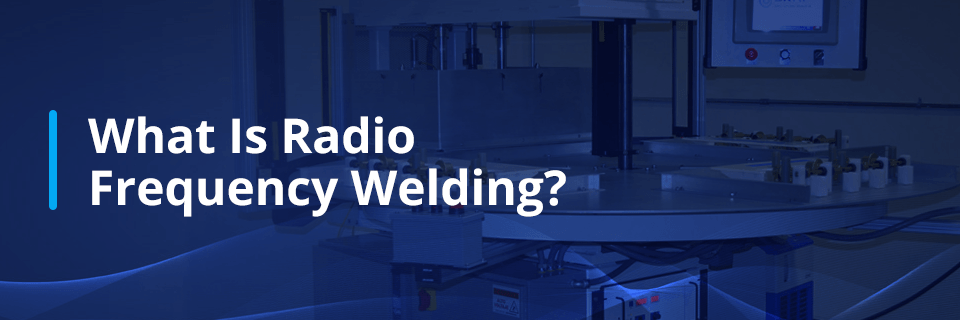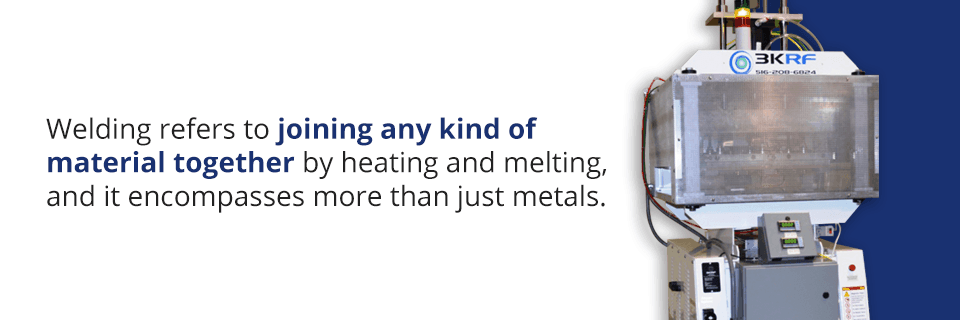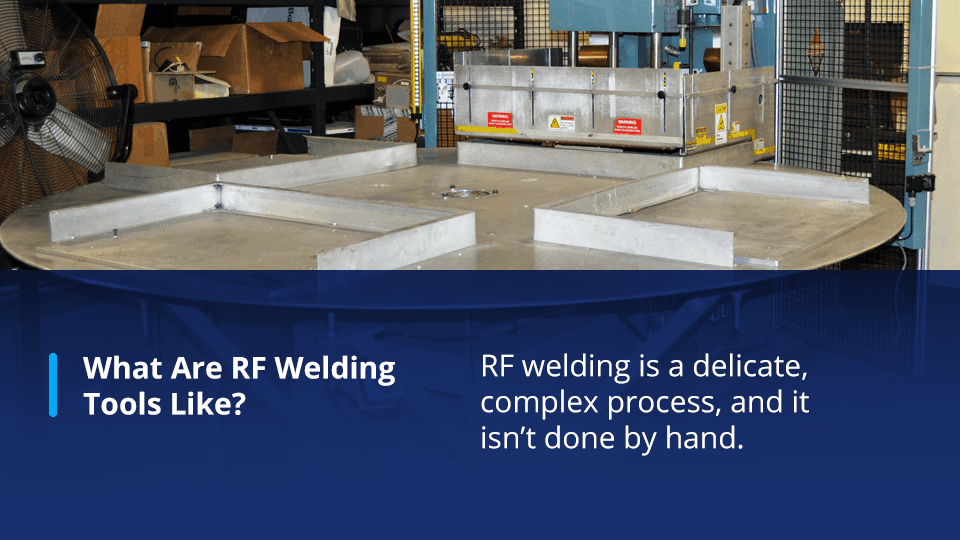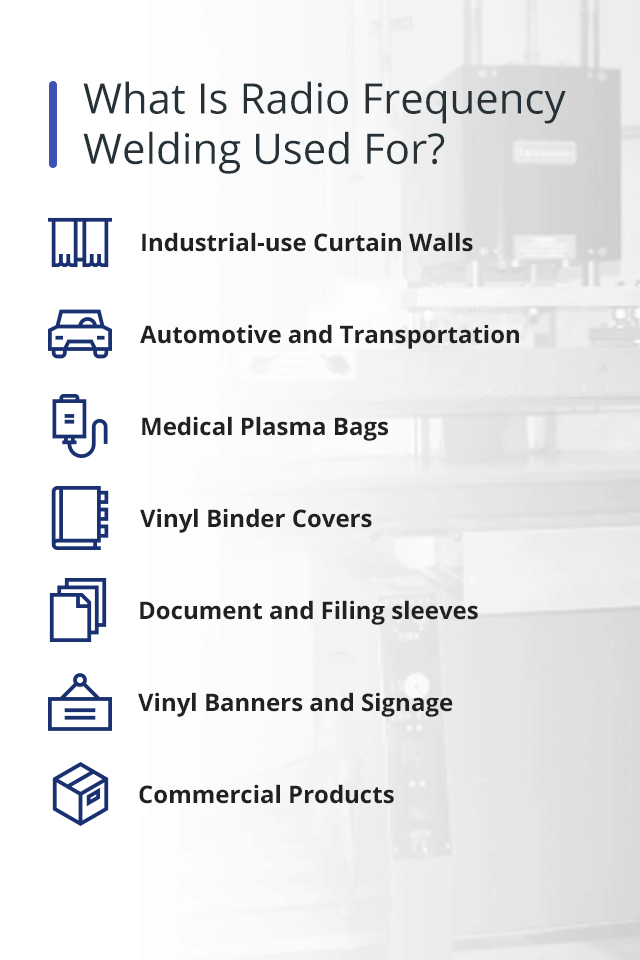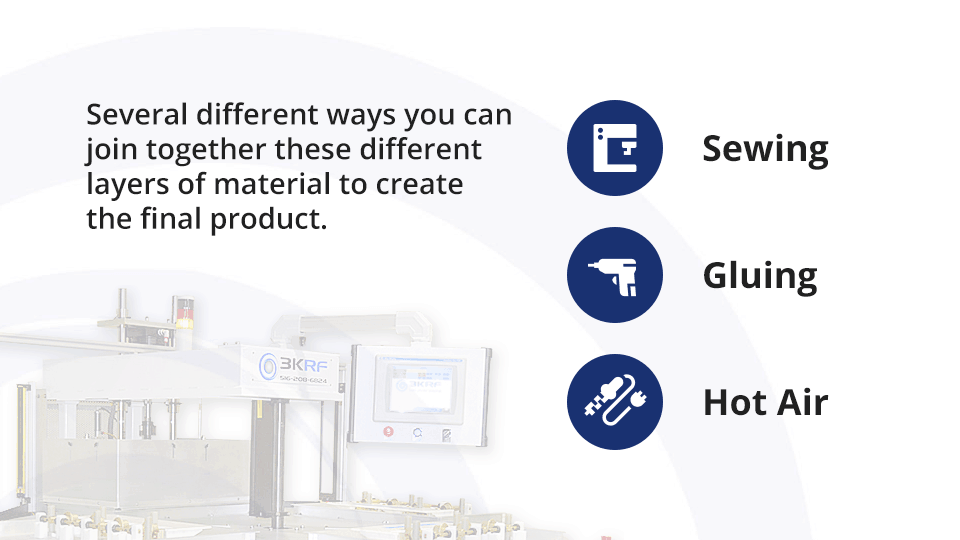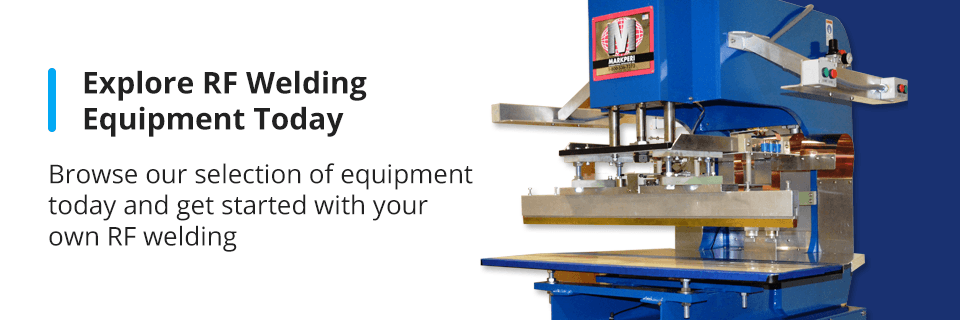The Ultimate Guide to Radio Frequency Welding
Have you ever heard the term radio frequency welding? If you’ve heard this term but not heard the accompanying explanation of what it means, then you might be left a little confused.
To help clear away some of this confusion and give you a clear idea of what this process is and what it entails, we put together this brief guide on the radio frequency welding process. Whether this is a process you plan on using in your work or merely a term that has raised your curiosity, we want to answer any and all questions you might have about it. Read on to learn the answers to all your questions.
What Is Radio Frequency Welding?
Welding refers to joining any kind of material together by heating and melting, and it encompasses more than just metals. Radio frequency, also known as dielectric welding, uses high-frequency radio waves to heat the plastic surfaces of two different items as they face one another to create an airtight seal. This heat reaches the point where the plastic surfaces begin to melt, and the two surfaces or materials blend together. Once the radio waves stop and the plastic cools down, the two different materials remain fused together, bonded now as one larger item.
One of the easiest comparisons to make is that the high-frequency plastic welding process is similar to the process of microwaving food. A radio frequency welder emits waves that hit the materials in question, melting them and causing a change in structure. This entire process is caused by the use of high-frequency waves, just like in a microwave.
In a perfect weld, the radio frequency waves will create a firm and extremely durable seal that is entirely airtight, preventing air, moisture and all other components from leaking. This seal can be pulled, twisted and otherwise stressed without loosening or coming apart.
You might hear this process referred to as radio frequency welding, radio frequency sealing or even high-frequency sealing. All of these are names for the same thing and indicate the same process.
Some people call radio frequency welding heat sealing, but they aren’t the same thing. Heat sealing joins two plastics together with direct heat and pressure from a constantly heated die that contacts the plastics. radio frequency welding does heat the molecules of two plastics, but no external heat source touches the plastic. In fact, for the most efficient welds, the radio frequency machinery should be kept at or just above room temperature.
What Materials Can Be Used in RF Welding?
Most commonly, this method applies to different varieties of plastics. This is because most plastics are relatively malleable and can melt under enough heat before re-firming into a new and combined shape. A few of the plastic materials that you might find used in a radio frequency welding process include:
-
- Polyvinyl chloride (PVC).
- Polyethylene terephthalate (PET).
- Low-density polyethylene (LDPE).
- Polyurethane.
- Nylon.
- Cellulose acetate.
- Ethylene-vinyl acetate (EVA).
Browse Our EquipmentContact Us
Components of Radio Frequency Welding Machines
Radio frequency welding is a delicate, complex process, and it isn’t done by hand. Instead, this type of work is usually completed by complex machines and highly specified processes that ensure the work is done carefully and correctly.
In most cases, a radio frequency welding system consists of two primary elements — the generator and the press.
- The generator, also referred to as a radio frequency generator, is the machine that actually creates and emits the waves that melt the materials. The average frequency most radio frequency welding machines use is 27.12 megahertz.
- The press, also known as a radio frequency welding or a radio frequency sealer, compresses the two newly melted elements together, helping them bond. The force used to compress the pieces is essential to a good weld. Low pressure can cause surface flashes and arcs as well as a poor seal. Pressure that’s too high can also create a poor seal by “crashing” the material.
You can find several different radio frequency welding machines on the market today that combine these two elements of the generator and the press to complete the high-frequency welding process. Two of the most common styles of machines are the shuttle radio frequency welders and the rotary radio frequency welders. The biggest difference between these two types of machines that essentially complete the same process lies in the way they move materials through the welding station. Shuttle welders have a plate that slides into the welding machine while a rotary welder has a round table that rotates under the welding part.
In the case of both types of machines, they use a press activated by air cylinders to squeeze the plastic materials together while the generator simultaneously emits radio waves. As the machine begins to heat up, the plastic slowly melts and, while it’s held in place beneath the press, begins to mold together in the shape dictated by the radio frequency sealing dies.
The sealing dies, another critical part of these machines, are typically built from either brass or aluminum. Both materials are acceptable, and both may be found in machines used today, although aluminum dies typically use more radio frequency energy than their brass counterparts.
Browse Our EquipmentContact Us
What Is Radio Frequency Welding Used For?
Now that we have covered how radio frequency welding works and looked at the machines that do this work, let’s examine some of the actual applications of radio frequency welding. In the real world, which industries are using this technology and what are they using it for?
RF welders work well for manufacturing products that require a watertight or airtight seal. Because of the fast welding speeds and the fact that the equipment generally stays cool when functioning, this process is ideal for large-scale production operations. Various industries use radio frequency welding applications for products with unique shapes and sizes.
Manufacturers prefer dielectric welding for many of their high-volume fabrication needs, from consistent straight welds for tarps, plastic doors and signage to distinct shapes such as tent peaks, water tanks and plastic cylinders. Many companies require multiple technologies for different seams in their manufacturing processes.
While the complete list would be much longer than this, a sampling of just a few of the potential applications of radio frequency welding technology includes:
- Industrial-use curtain walls
- Automotive and transportation upholstery trimmings
- Truck tarps
- Document and filing sleeves
- Vinyl banners and signage
- Commercial products and transportation blister packs
- Transportation and automotive manufacturing.
- Industrial packaging.
- Portable plastic walls and curtains.
- Medical items like blood bags, blood pressure cuffs and disposable clothing.
- Vinyl signs and banners.
- Inflatable products, such as life jackets, beach balls and air rafts.
Because of the nature of radio frequency welding machines and how they need to be uniquely reset for every new item they produce, this type of welding often works best when producing things in high volume. This makes it an excellent asset when it comes to mass production. If, on the other hand, you’re looking to weld something on only a one-time basis, radio frequency welding might not be the most practical choice.
Browse Our EquipmentContact Us
Alternatives to RF Welding
When it comes to making these types of products for these types of industries, radio frequency welding is far from the only option available.
There are several different ways you can join together these different layers of material to create the final product. These alternatives include:
- Sewing: As everyone knows, sewing is a tried-and-true method of joining two different materials together. With sewing, however, the seal is very far from airtight. In addition to this, the seal is not extremely strong. If put under pressure, the seam will likely rip and separate the materials again.
- Gluing: Gluing or using a similar adhesive is another fairly common way to stick two different materials together to create a seal. While gluing is appropriate in many situations, it ultimately falls short in other settings that typically use RF welding. First, the adhesive will eventually wear out, thus weakening or even breaking the seal. Second, gluing usually takes longer than welding. Since time is money, this can be an issue. Third, glue often involves using chemical substances that may end up being harmful to the environment.
- Hot Air: Hot air is another common method of essentially combining two materials into one. With this method, heat is applied to the outside of the two materials until they melt and adhere into one. The main problem is that, while this method can be effective, it only works up to a certain thickness. When the materials are simply too large, this method doesn’t work. These materials likely won’t bond, and even if they do, the bond will be weak and easily breakable.
The Benefits of Radio Frequency Welding
Why choose radio frequency welding when there are other alternatives available? The RF welding process creates leak-proof seams by combining the strengths of the original materials, making the bond as durable as the original materials. The joint is heavy-duty and highly resistant to tears and rips, resulting in a product superior to conventional bonding methods.
Radio Frequency welding is an ideal solution for durable seams in heavy-use scenarios under harsh conditions. Some of the primary benefits of using RF welding equipment include:
- Seal Strength: When using radio frequency welding, you create a seal that is stronger than the base material itself. This means that the seal will be more durable and less likely to crack, break or pull apart.
- Lower RF Tooling Costs: Dielectric welding equipment bonds materials with less power and arcing, creating minimal wear on the dies and platens. Less wear on the tooling means a longer life span with higher quality results.
- Seal Security: The seal created by radio frequency welding is extraordinarily strong and durable. It’s watertight, airtight and built to last.
- Improved energy efficiency: Radio frequency welding equipment often operates on half the power of tube-style plastic heat sealers. These reduced levels translate to lower utility bills and improved efficiencies that can increase your operation’s bottom line.
- Solidarity of the Unit: When you seal two materials together with radio frequency welding, you aren’t just building a strong, durable and long-lasting seal. You’re also bonding two materials that become far stronger because they’re joined together.
Contact the Experts at Mark Peri Today
If you’re looking to invest in a high-quality radio frequency welding machine of your own, then MarkPeri is the place to look. We’ve been proudly manufacturing a wide range of radio frequency welding machines since 1981, all while remaining on the very cutting edge of the industry, so that you can rest assured you’re getting the very latest machines on the market. Selling machines and equipment isn’t the only thing we do, either.
We’re also passionate about providing you with the very finest customer service, doing everything from answering your questions to helping you pick out the perfect material to use with your new welding machines. Browse our selection of equipment today and get started with your own radio frequency welding. If you have any questions, please contact us. We’ll be happy to help you find the right high-frequency welding machine for you.

